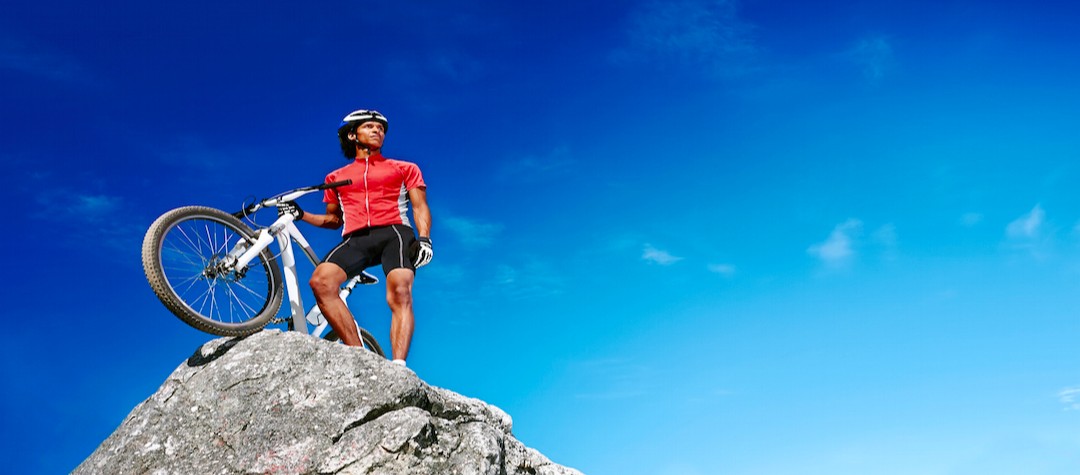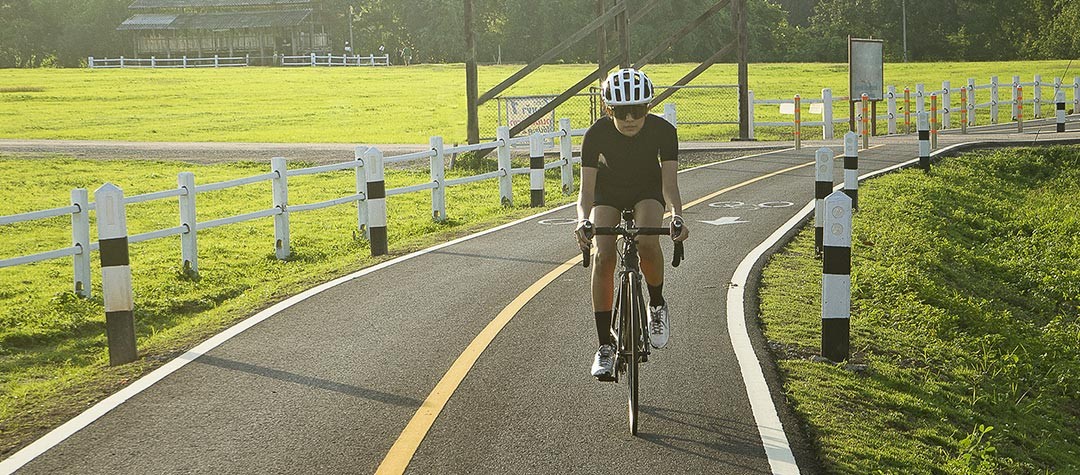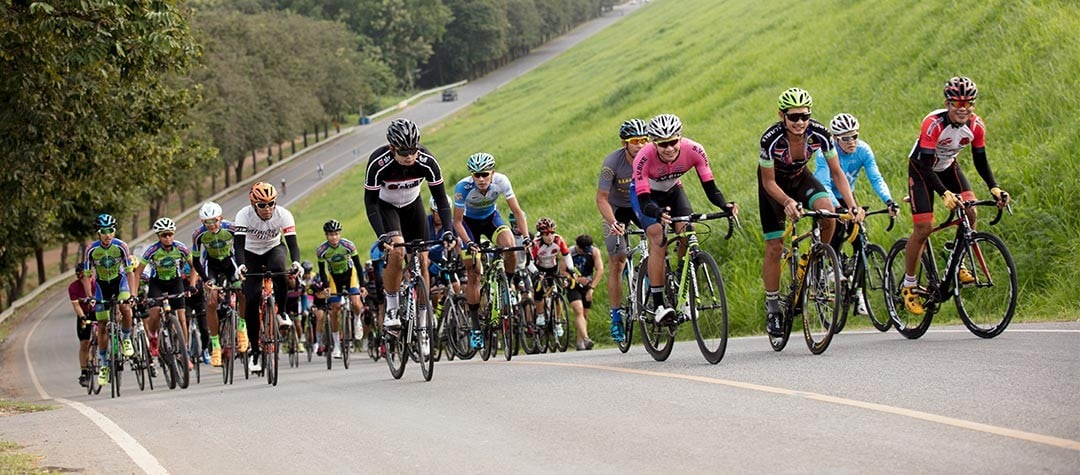Before you get started in mountain biking, you’ll want to get geared up correctly to provide safety and comfort on your ride.
Investing in some good quality equipment will not only add to your safety but will also make your ride significantly more enjoyable. Ploughing through mud, wind, rain and more takes its toll on all but the most committed of riders, so here’s a guide to the bare essentials you’ll need to get started.
Although lots of the gear that we outline here is as applicable to road biking as it is to mountain biking, there are plenty of specialist products available and cycle shops where you can get pretty much mountain bike gear only.
Helmet
Nearly 80 per cent of cycle-related deaths result from head injuries, so riding without a helmet is not really a sensible option. Here’s what you should look for when choosing your mountain biking helmet:
- It has a peak to keep the sun or mud out of your eyes.
- There is a main strap that fastens under your jaw.
- It is adjustable, not too tight and feels comfortable.
- It fits snugly on your head and doesn’t rattle around.
- It’s lightweight, with plenty of vents.
- It’s from a reputable manufacturer and retailer.
- It has the appropriate safety approval sticker inside.
Biking sunglasses
It’s always useful to have a pair of glasses on when you’re mountain biking, whether it’s the middle of summer or the depths of winter. There always seems to be something flying around that has your eyes as its target. The best ones are those where you have interchangeable lenses. Normally you get a set of three; clear, tinted for the sun, and orange to improve light quality.
Water bottle
If you’re heading out for a long mountain bike ride it’s really important to take plenty of fluid with you. You can fix two water bottle holders on most bikes and it is well worth doing. You could put water in one and an energy drink in the other.
Tool kit
There are literally hundreds of products that you could include in your tool kit but we’ve made it easier for you by picking a selection for you. We’ve split them into two — one set that you should take with you on each ride and the other that you can leave at home.
Take these with you:
- A set of screwdrivers (sounds like a lot but doesn’t need to be if you get a set of ‘all in ones’)
- Tyre levers - essential if you get a puncture.
- Puncture repair kit - only a few pounds and if you forget it your day could be ruined!
- Spare inner tube - or preferably two for your mountain bike.
- A tyre pump - smaller the better. A CO2 inflators is a good compact option.
- Adjustable wrench - just in case!
- Set of Allen keys - again you can get these in a small retractable tool just like the screwdrivers.
Keep at home:
- Chain tool - this could go with you if you’ve got room. It’s not a common occurrence but breaking your chain could leave you stranded.
- Spoke wrench - occasionally your spokes may require adjusting or replacing.
- Grease - you’ll need this for ongoing maintenance.
- Wrenches and pliers - most household tool kits will have all you need.
- Degreaser - it’s a mucky business but you need to get all that off your chain and other moving parts.
- Chain lube - after thorough cleaning you’ll want to lube up your chain to maintain its life and effectiveness.
There are plenty of other bits and pieces that you could need, but don’t go out buying up everything you might possibly need. Instead, speak to riders or get help from your local bike specialist rather than spending money on items that you may rarely use or that fellow riders can readily lend you..
Clothing
Mountain biking is being taken over by the fashion world in a similar way to surfing. What you wear is considered by some to be as important as how you ride. As you would expect, there is a vast range of shorts, shirts and jackets available, both for riding and for posing around in afterwards.
Apart from fashion, the same principles of clothing apply as for to road biking:
Proper cycling shorts can take the pain out of riding, as they have built in padding (or a separate removal pad and lining) that can make all the difference. A sore backside can ruin a long ride.
A good t-shirt in summer or a fleece and rain jacket in winter are perfectly adequate, but you can, as you would expect, buy special cycling gear that is generally a tighter fit and better performance-wise. It is well worth getting some shirts that ‘wick’, or draw the moisture away from the body as you sweat. The same goes for the other layers such fleece and waterproof in winter. There are plenty on the market that are made from ‘breathable’ fabric.
Gloves are an essential part of your kit. Use fingerless, padded ones in summer and full length ones in winter. Your hands will not only get cold, but also sore from constant braking and vibrations without them.
Shoes
The shoes you need are in some respects quite different to road shoes. They have hard soles (often with a recessed area for a cleat so you can walk on them) and are considered an essential part of your kit by those into hardcore off-roading.
Some mountain bikes will have open platform pedals, so you’ll be able to wear training shoes or specially designed shoes, but some more expensive pedals will be off the clip in variety, meaning that you’ll need to buy special shoes to use them. the most comonly used by mountain bikers are Shimano SPDs which use a two-bolt system to connect the cleat to the shoe.
Bike accessories
There are hundreds of extras that you can fit to your bike to personalise it, from water bottles, to stickers, to mudguards. Each of the main brands has a huge selection available. Most retailers will stock only one or two of the key brands, not all of them.















